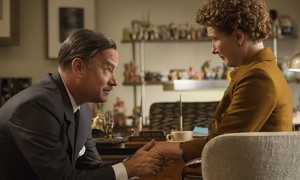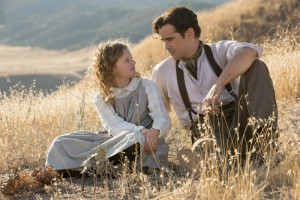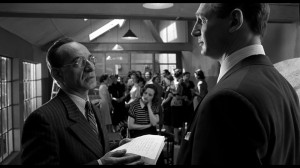The Wolf of Wall Street
Posted on December 24, 2013 at 6:30 pm
A-| Lowest Recommended Age: | Adult |
| MPAA Rating: | Rated R for sequences of strong sexual content, graphic nudity, drug use and language throughout, and for some violence |
| Profanity: | Constant very strong and crude language |
| Alcohol/ Drugs: | Every possible kind of substance abuse |
| Violence/ Scariness: | Peril including a crashed helicopter and a sinking ship |
| Diversity Issues: | Diverse characters, insensitive treatment of little people |
| Date Released to Theaters: | December 25, 2013 |
| Date Released to DVD: | March 28, 2014 |
| Amazon.com ASIN: | 0345549333 |
Jordan Belfort is a selling machine the way a shark is a killing machine. Every single element of his being is optimally designed for just one purpose, with no extraneous or pesky attributes like a conscience to slow him down. And so, when he interrupts the story right off the bat to make sure that we see the color of his Lamborghini was white (like in “Miami Vice”) not red, he knows it will encourage us to believe that he cares about making sure we get the truth, the whole truth, and nothing but the truth. It’s his version of it, anyway, as told in his book, The Wolf of Wall Street.
Belfort actually doesn’t spend much time on Wall Street, but those magic words make for a better sales pitch. The man knows how to tell a story. He gets a job on Wall Street at age 22, a “smile and dial” position where he is supposed to get 500 people a day on the phone and ready to talk to a broker who will pitch them some stocks. A senior broker (a still painfully skinny post “Dallas Buyers Club” Matthew McConaughey, perfectly capturing the insanity of people who make a ton of money pretending they understand something that makes no sense) takes him out to lunch. He tells the waiter to keep the liquor coming, and explains to Belfort the key lesson: brokers are not there to make money for the clients — they are there to make money from the clients. He also advised Belfort to keep his lower half, uh, relaxed, and his upper half, uh, stimulated. This is advice that Belfort will take, uh, to heart.
But first he has to lose his job when Wall Street firm collapses following what we then called a crash back in October of 1987, but now, having recalibrated following far greater financial disasters, we call a momentary dip. Belfort then discovers a whole new world of not-quite-legal penny stock brokerages on Long Island (director Spike Jonze has a very funny cameo as his new boss) and soon he is running his own boiler room operation out of what once was a car repair shop. This was, in fact, the inspiration for the terrific movie “Boiler Room,” starring Giovanni Ribisi, Ben Affleck, and Vin Diesel. He gives his firm a made-up name, brilliantly constructed to sound established, solid, and vaguely familiar: Stratton Oakmont.
Here Belfort learns two more important lessons. First, there’s no such thing as bad publicity. A story in Forbes that calls him a reverse Robin Hood, stealing from the poor to make money for himself, gets him an avalanche of job applicants eager to join his Merry Men. Second, too much is never enough. Belfort does not fall into every possible kind of addiction and substance abuse; he embraces it. There are mountains of drugs and hookers in this movie, plus a helicopter crash (while Belfort was high), sinking a yacht “suitable for a Bond villain” that once belonged to Coco Chanel (while Belfort was high), midget tossing and a crazy-hilarious conversation about the parameters of midget-tossing (and, in passing, the ethics), a near-naked marching band in the brokerage, and then more drugs and hookers. This is all in the book, and screenwriter Terrence Winter told Joe Nocera of the New York Times that “when he interviewed the F.B.I. agent who finally nailed Mr. Belfort, the man said, ‘I tracked this guy for 10 years, and everything he wrote is true.'” That includes the macabre but over-the-top hilarious scene of a drug overdose that leaves Belfort incapable of standing or speaking coherently that comes at the worst possible place and time. The cocaine and ludes are not nearly as powerful as the most intoxicating substances of all: greed mixed with testosterone and pure id.
“Is this legal?” Belfort cheekily asks us as he explains what he is up to? “Absolutely not!” He knows we are not interested in the details. We are too busy being dazzled by the excess and how much fun everyone is having with it. By now, Belfort has left his pretty first wife (big-eyed Cristin Milioti, the mother from “How I Met Your Mother”) for a second, spectacularly beautiful wife he calls “The Duchess of Bay Ridge” (Margot Robbie, nailing the accent and the attitude). He has houses, horses, Coco Chanel’s yacht, and two security guards, both named Rocco. He is taking a hospital’s worth of pills and a “Scarface”-load of cocaine. And an FBI agent (“Friday Night Lights'” Kyle Chandler) is looking into his activities. We know he’s serious because he has one of those cork boards with pieces of paper thumb-tacked onto it to keep track of the case.
Like his “Goodfellas,” Scorsese’s storytelling here is utterly mesmerizing, with brilliant performances in every role. DiCaprio is electrifying. If Stratton Oakmont was still around, there would be a line of eager applicants around the block tomorrow. In smaller roles, Rob Reiner, as Belfort’s father and compliance officer, “AbFab’s” Joanna Lumley as a willing accomplice and “The Artist’s” Jean Dujardin are stand-outs, and Jake Hoffman (son of Dustin Hoffman and Anne Byrne) is just right as shoe designer Steve Madden, whose company was taken public by Belfort’s firm. In one brief but key scene, Stephanie Kurtzuba beautifully creates a complete and compelling character who tells us a lot about her life and about Belfort as well.
And like “Goodfellas,” this is the story of a ruthless entrepreneur that illuminates the best and worst of the American spirit, big dreams, ambition, energy, focus. We know Belfort is a crook who exploits the trust of people who don’t know better but we can’t help being sold ourselves because he makes it look like so much fun. And we know that while he spent less than two years in jail, where he played tennis and came out to a lucrative new career as a motivational speaker and got to be played by Leonardo DiCaprio in a Martin Scorsese film, the real Wolves of Wall Street will love this movie. And then they’ll go back to their hundreds of millions of dollars, houses, horses, and two security guards named Rocco who, along with the loopholes they made sure stayed in the laws, will protect them from even the slap on the wrist faced by Belfort.
Parents should know that this film has NC-17-level content with extremely explicit and mature material, with explicit sexual references and situations including orgies and nudity, extensive drinking and drug abuse, crooked dealings and fraud, constant very strong language, peril, and some violence.
Family discussion: Why were Belfort’s colleagues so loyal to him? Why were the customers so willing to be cheated? Was justice done?
If you like this, try: “Boiler Room” (also inspired by Belfort), “Goodfellas,” and “Wall Street” and Michael Lewis’ books Liars Poker and The Big Short.







